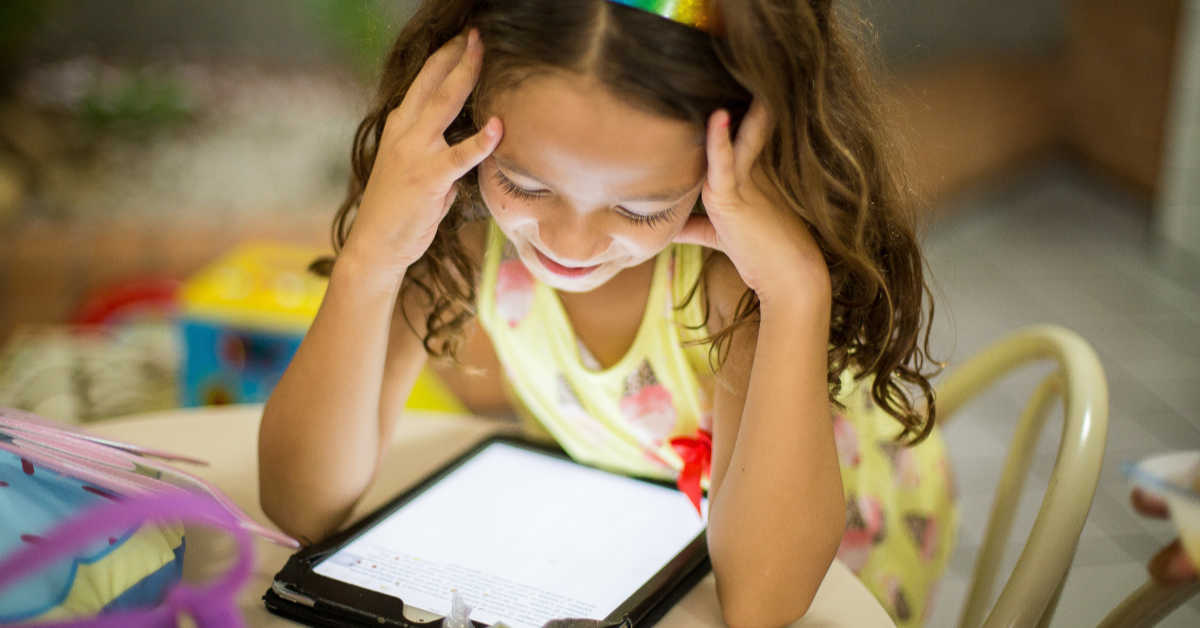Screen Time and Our Teens’ Mental Health Crisis
In a 2018 survey half of the parents questioned believed that smart phone usage negatively affected their child’s mental health. And nearly half thought their child was actually addicted to the device.
The parents are right. Study after study points to screen time as a significant predictor of decreased mental health in young people. And parents instinctively know this: something isn’t right with too much screen time. Our kids aren’t themselves – they might get despondent, irritable or aggressive. It’s concerning, but sometimes we wonder what can we do about it? It’s the way of the future after all.
It shouldn’t be. Here’s why.
The Research
From the early 1960s to the early 2000s, measures of well being have consistently risen, particularly for our teens. This data measures things like self-esteem, life satisfaction, happiness, job satisfaction and friendships. However, from 2012 the trend has started to reverse. Rather than data showing well being generally increasing, it is now steadily decreasing.
2012 is also the year that smart phone ownership tipped over to the majority of mobile phone users. It’s the year that their use became widespread among teenagers. And, it’s the year where data shows a surge in depression, anxiety and suicide amongst our teens.
A new study shows that this is not just coincidence. Over 1.1 million young people answered questions about their well being and their screen time use. The data showed that that too much screen time is toxic to our kids. Teens who spend more time on screen activities are more likely to be unhappy. They are more likely to be lonely, depressed, anxious and even suicidal. In fact, nearly half of teens who spent five or more hours a day on a device had contemplated, planned or attempted suicide at least once.
Our teens are in the midst of a mental health crisis, and screens are a big part of the problem. To be clear, screens are not the problem, nor are they the only problem. But they are a genuine contributor to the mental health problem.
The Goldilocks Zone
But it’s not all bad news.
In the story of Goldilocks and the Three Little Bears, Goldilocks is always looking for the ‘perfect’ thing – porridge that is neither to hot nor too cold, a chair that is neither too big nor too small and bed that isn’t too hard or too soft. Each of these things she wanted just right.
This has led scientists and researchers to adopt the idea of a Goldilocks Zone, or the place where all things intersect to make the perfect combination. And now, the University of Oxford has applied the phrase to screen time.
Researchers have discovered there is a point between low and high use of technology that is ‘just right’ for our teens. This is the magical intersection where digital connection can increase creativity, communication and development, and where well being is boosted rather than harmed. This is the Goldilocks Zone.
But where is the Goldilocks Zone? What is the right amount of screen time for our teens? Unfortunately there is no hard and fast answer to those questions. It varies, depending on the child and the device, and whether it’s a weekday or a weekend, and depending on what other activities your child is missing out on in favour of screen time.
As parents it’s our job to help our teens use screens in a way and in an amount that boosts their well being. The below guidelines can help us do just that.
Screen Time Guidelines
1. Use your common sense.
As parents, you know your children best. Trust yourself. Use your common sense, be discerning and exercise your own good judgement when it comes to screen time use.
2. Consider content and context in determining limits.
While some people get caught up on “how much” screen time is OK, my preference is to focus on “what type” of screen time is best. If their screen diet is junk, then keep it short, just like you limit the amount of sugar they eat. If they’re doing valuable and legitimate learning or truly useful social things, be more flexible. Content matters. So does context. It’s not OK to have screens in rooms or at the table. You may have other rules too. The context should determine whether kids are OK to be on screens. Friends over? No screens! Chores done, homework done, and reading done? Sure, have some fun on screens. When considering all the things our kids are missing out on when they are on screens – time to develop and deepen relationships, to be creative and to engage in physical activity – we want to be intentional about how and when screens are used.
3. Encourage other activities.
When your kids ask to play video games or use the tablet have a list of things ready to suggest instead. Things like:
- Have you played outside?
- Have you spent time with a friend?
- Have you read a book?
- Have you tidied your room?
What you suggest, and how firmly you suggest it, is up to you. But by engaging in these types of activities, children will do much more for their brains, their bodies and their well being, then sitting in front of a screen. (I’ve written additional suggestions here.)
4. Make sure Goldilocks Screen Time is Healthy Screen Time.
Even when the kids are using screens, make sure that they are having positive screen and media experiences. Even better if these are shared as a family.
Active, positive use of screens should be encouraged, but as parents we know when enough is enough. And certainly our teens have had enough. If we can get them to put down the game controller and head out on the oval, or set aside the iPad and get their nose in a book, we’re going to have happier and healthier kids.
If you have younger kids, I’ve written about guidelines for screen time for our little ones, here.
Article supplied with thanks to Happy Families.
About the Author: A sought after public speaker and author, and former radio broadcaster, Justin has a psychology degree from the University of Queensland and a PhD in psychology from the University of Wollongong.










